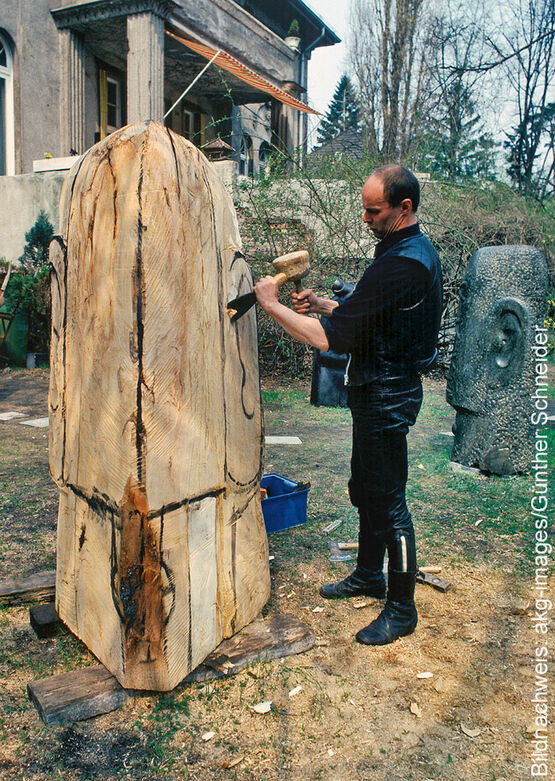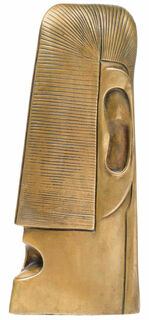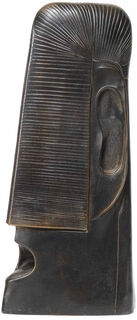
Rainer Kriester
1935-2002
"I am a realist by nature, but I do not work realistically. I am not an abstractionist, but I seek abstraction." This is how Rainer Kriester summarised his work.
Kriester is one of the most important German sculptors of the late 20th century.
Kriester, a medical student, fled from the GDR to West Berlin after being imprisoned for a year for "anti-government remarks". There he began to study painting at the Berlin Kunsthochschule in 1961. In 1970 he started working intensively as a sculptor.
In the 1980s, he achieved his international breakthrough, during which he moved his place of work gradually to the Ligurian town of Vendone. This is also where he created many of his "head signs". Some of them are monumental figures made of bronze, wood, and stone. They are not masks, but highly individual heads, engraved with the traces of life lived and experienced.
Wieland Schmied, art historian and long-time president of the Bavarian Academy of Fine Arts, describes his sculptures as "still vibrating with exciting life under their skin".
The most prominent version is the 1.50 m high "White Head Sign" from 1984-1987. Along with works by Chillida and Lüpertz, it belongs to the important sculpture collection of the Federal Chancellery.


